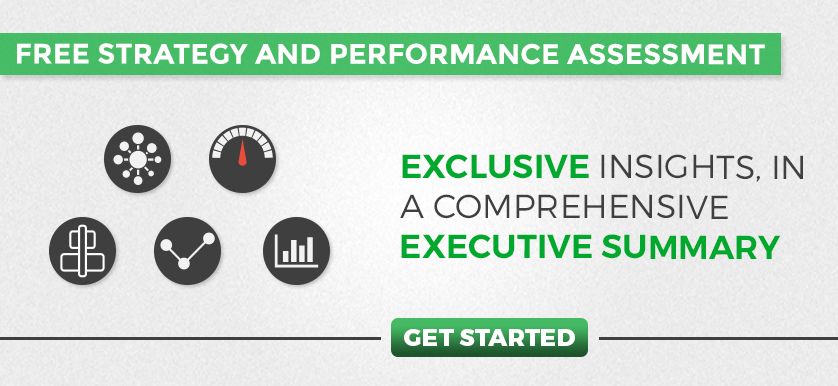Charting a Course: A Step-by-Step Guide to Deliberate Strategic Planning

Image Source: Freepik
In their 1985 paper “Of Strategies, Deliberate and Emergent,” Henry Mintzberg and James A. Waters describe strategic planning as a continuum. There is deliberate strategic planning on one end and emergent strategic planning on the opposite.
Deliberate strategic planning represents a structured, systematic approach to strategy development that emphasizes a planned, intentional, and coherent process whereby organizations set clear objectives and design strategies to achieve them. This approach presupposes a stable environment where goals and actions align closely.
On the other hand, an emergent strategy is more adaptive, arising from patterns of action rather than premeditated plans. While emergent strategies thrive on flexibility and responsiveness, deliberate strategies emphasize clarity, predictability, and alignment with long-term objectives.
Despite the growing popularity of emergent strategic planning, the deliberate approach remains vital for corporations aiming for sustainable success. One of its core strengths lies in the distinct roles it ascribes to top management and middle managers. In the deliberate process, top management acts as architects of the strategy, setting overarching goals and ensuring alignment with the organization’s vision, while middle managers focus on operationalizing these strategies and managing their implementation.
Read More >> Strategic Alignment: A Key Factor for Business Success
The Four Phases of Deliberate Strategic Planning
As outlined by J. Scott Armstrong in his paper on the importance of value planning in making strategic decisions, deliberate strategic planning unfolds in four distinct phases, with each phase contributing to securing stakeholder commitment. Before diving into these phases, it is important to recognize that historical data serves as one of the cornerstones of the process. Organizations rely on their data repository to provide past performance metrics and external trends.
Top management can utilize historical data to identify patterns, trends, and benchmarks, which they can then use to design actionable plans. Meanwhile, middle managers can use this data to refine tactical operations, ensuring that daily activities align with strategic objectives. Having a robust data architecture not only allows a company to more accurately analyze what has happened but also to forecast future trends, mitigate risks, and design strategies grounded in evidence rather than conjecture. With this foundation, organizations can proceed through the deliberate strategic planning phases with clear direction.
- Defining Long-Term Objectives: The first phase involves defining the company’s long-term goals or ultimate objectives. These goals must align with the aspirations and priorities of various stakeholders, such as employees, investors, and customers. Tools like stakeholder analysis can identify key interests and concerns, while SWOT analysis evaluates the organization’s strengths, weaknesses, opportunities, and threats. Furthermore, in later stages of this planning process, the use of SMART criteria—specific, measurable, achievable, relevant, and time-bound—ensures the clear statement and actionability of goals. By integrating these tools, companies create a foundation for a cohesive strategic vision that resonates across all stakeholder groups.
- Generating Strategies: The second phase centers on generating strategies and alternative approaches to achieving these long-term goals. Companies must consider comprehensive strategies that incorporate slack resources—such as additional time, finances, or facilities—to account for uncertainty and enhance the plan’s flexibility. Generating alternative strategies is a crucial practice that bolsters adaptability. Techniques such as brainstorming sessions, unstructured group meetings, and scenario planning encourage creativity and provide contingency options. This phase ensures that the organization has a repertoire of well-thought-out strategies ready to deploy, even in dynamic or unpredictable environments.
- Evaluating Strategies: After developing strategies and alternatives, the third phase evaluates their feasibility in relation to the first phase’s objectives. This evaluation process ensures that the proposed strategies are realistic, effective, and aligned with the company’s mission. Methods such as checklists, the Delphi technique, and the Devil’s Advocate approach provide structured ways to scrutinize strategies. For instance, a checklist can ensure that all critical factors, such as resource availability and market conditions, are considered. The Delphi technique harnesses internal expert consensus, whereas the Devil’s Advocate method identifies potential flaws or risks. This rigorous evaluation phase narrows down the list of strategies to those most likely to succeed.
- Strategy Monitoring and Implementation: The final phase involves systematically monitoring the results of implemented strategies. Companies should establish a feedback system with clearly defined intervals—such as quarterly or semi-annual reviews—to assess performance and make necessary adjustments. This system must account for changes in external factors, such as economic, technological, geopolitical, and social shifts, as well as internal factors like evolving strengths, weaknesses, and competitive actions. Key performance indicators (KPIs) serve as a critical tool for monitoring progress, enabling organizations to measure outcomes against predefined benchmarks. Integrating KPIs into the company’s performance management system and linking them to the organizational incentive system ensures accountability and motivates stakeholders to align their efforts with strategic goals.
Securing Stakeholder Commitment
A deliberate plan significantly enhances a company’s ability to secure stakeholder commitments throughout the process. A well-structured plan not only communicates the company’s long-term objectives but also fosters a sense of ownership among stakeholders. For instance, engaging stakeholders in the development of alternative strategies allows them to voice their concerns and align their interests with the organization’s goals.
Similarly, an accurate feedback and monitoring system ensures transparency, showing stakeholders how their contributions influence outcomes and incentivizing them to remain invested in the strategy’s success. This is especially crucial in large corporations where the different parts of the organization must work in alignment with the organization’s objective.
Strategic Foundation
Deliberate strategic planning remains an indispensable tool for organizations, offering clarity, structure, and alignment in an increasingly complex business environment. While emergent strategies provide flexibility and responsiveness, deliberate strategies establish a solid foundation that guides decision-making and ensures consistency.
Read More >> The Circular Economy Model: Developing Environmental and Organizational Long-term Value
Technology such as big data further enhances this process by equipping organizations with more comprehensive and timely datasets to generate actionable insights, maintain advantages, and refine strategies with greater precision. Furthermore, many companies could benefit from leveraging both approaches, enabling top management to define clear objectives while empowering all levels of management to adapt and innovate. This integrated approach ensures that organizations remain resilient, adaptable, and primed for success in the face of evolving challenges.

Tags: Deliberate Strategic Planning, strategic planning, Strategy





